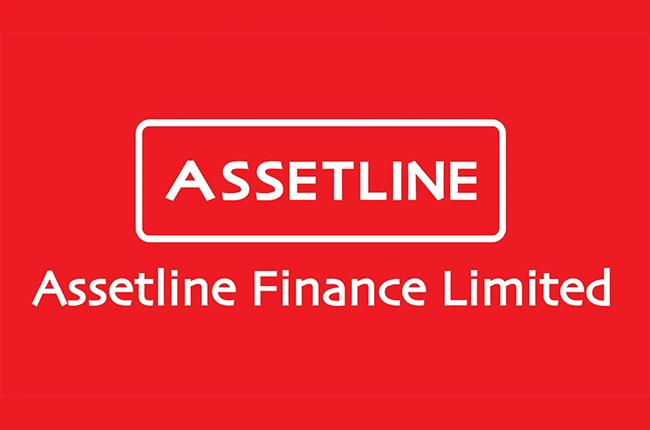Corruption rarely distributes evenly across a public sector. It clusters where discretion, value, and opacity intersect. That triad explains why certain interfaces carry outsized risk compared with routine services. It also explains why public perception often diverges from the locations of greatest fiscal harm. Citizens notice corruption where they stand in queues or meet officers. Budgets feel corruption where high-value decisions alter taxes, tariffs, licences, or access to state assets. These two maps overlap imperfectly, which distorts debate and measurement.
Perception is a contact-point phenomenon.
Front-of-house institutions dominate conversation because they touch people daily. A traffic stop, a permit counter, a school placement, or a local registry creates direct experience. Complaint channels absorb this energy, and media coverage amplifies it. Harm is a ledger phenomenon. A single undervaluation, waiver, or misclassification can erase months of street-level leakage in one stroke. Quiet decisions inside valuation, assessment, and release pipelines move numbers that never appear in a household’s anecdote. This asymmetry shapes the politics of integrity. The visible irritates; the invisible impoverishes.
Complaint volumes understate loss for a structural reason. Large schemes often create mutual benefit for private actors and complicit officials. Silence becomes a feature, not a bug. Few participants volunteer evidence against themselves, and bystanders rarely hold the necessary documents. Complaint data therefore over-weights petty solicitation and under-weights engineered fraud. Interpreting low complaint counts as low corruption risk in high-value workflows misreads the signal.
Risk is uneven across geography and season. Regions with higher transactional volumes, denser trade, or more complex permitting ecosystems tend to report more incidents. Seasonal spikes appear near fiscal closes, policy transitions, and holidays. Volume surges strain controls, and rule changes create confusion. Brokers cluster where complexity and delay are predictable. Their presence signals both demand for navigation and opportunities for extraction. A map of broker activity often mirrors a map of discretionary choke points.
Corruption adapts to the available “currencies.”
Cash remains common, but goods, services, and coercive quid pro quo also feature where money trails are risky. Non-cash inducements complicate detection frameworks that focus on banking flows alone. The texture of inducements evolves with enforcement posture. When cash trails harden, barter rises. When formal records strengthen, pressure shifts to verbal approvals and off-system nudges.
Data fragmentation amplifies risk. When tax, customs, licensing, company registration, and procurement datasets cannot be matched, concealment becomes routine. Each silo renders a narrative that looks plausible on its own terms. The gaps sit between systems. False declarations prosper in those seams. Post-event verification weakens if the verifying body cannot see third-party confirmations, trade manifests, or related-party structures. The result is low certainty of consequence even where laws read strict on paper.
Discretion creates bargaining space.
Ambiguity in classification, valuation, or eligibility allows wide latitude. Tight timelines raise the price of delay. Where rules require judgement without clear audit trails, the value of that judgement increases. Gatekeeper units that approve, value, or release assets face stronger temptation than units that merely record. That asymmetry concentrates both risk and return in a small set of desks. Staff tenure dynamics matter here. Very long placements in sensitive units create relationships that can be exploited. Excessively rapid rotations without knowledge transfer also weaken controls by resetting institutional memory. Both extremes carry cost.
Partial digitisation changes theatre but not substance. Systems that log steps without removing manual backdoors produce clean-looking trails while leakages shift to the unlogged parts of the process. Time stamps suggest order. Real influence migrates to pre-entry triage, off-system “queries,” or post-release adjustments. The mismatch between what the screen shows and how the decision forms in practice is a recurring pattern.
Broker ecosystems thrive on complexity. Jargon-heavy forms, fragmented checklists, and unclear timelines make ordinary users dependent on intermediaries. Complexity itself becomes a currency. The more opaque the process, the greater the value of someone who claims to speak its language. Over time, this normalises payment for speed, not just for outcomes, and blurs the boundary between legitimate facilitation and unlawful inducement. When everyone expects “a little something,” thresholds shift, and larger demands feel ordinary.
Measurement often chases what is easiest to count.
Complaints, arrests, and case filings supply tidy numbers. Yet these inputs correlate weakly with true exposure. Outputs that reflect harm tell a different story. Assessed versus collected revenue in flagged segments indicates leakage. Reversal rates after post-event audit reveal misclassification intensity. Anomaly clusters by officer, desk, or counterparty indicate concentration. Processing-time variance by office suggests bargaining space. Procurement transparency ratios show how often documentation survives public scrutiny. These indicators do not comfort as easily, but they describe reality more closely.
 Read the previous article – “Regulating Microfinance: Sri Lanka’s Next Step in Social and Economic Reform“
Read the previous article – “Regulating Microfinance: Sri Lanka’s Next Step in Social and Economic Reform“
Trust dynamics follow a separate path. Public trust tracks everyday touchpoints, not balance-sheet entries. A system can haemorrhage funds quietly while citizens report smoother service because a few superficial frictions reduced. Conversely, tightening high-value controls can yield public annoyance if it increases legitimate checks at counters. The political challenge stems from this misalignment: reforms that cut leakages can feel like inconvenience, while cosmetic streamlining can earn praise even as losses persist elsewhere.
Language matters inside institutions as well. Integrity framed as ethics alone tends to drift into slogans. Framed as operational discipline, it occupies the everyday work of files, logs, and thresholds. Culture follows signal. The conduct of top teams shapes norms faster than campaigns. Recorded decisions, clear recusals, and visible compliance act as anchors for the rest of the organisation. Absence of signal invites improvisation.
Normalisation risk grows with repetition. Small “facilitation” payments framed as harmless grease gradually redefine the baseline. Each tolerated exception invites a larger one. Over time, the system learns to expect what it tolerated yesterday. Reversing this path requires more than headlines. It requires consistent friction at the points where value and discretion meet, until expectations recalibrate. Without that friction, the memory of easy workarounds persists longer than any single crackdown.
External conditions alter incentives. Exchange-rate shifts, commodity swings, import restrictions, and sudden subsidies change the value of administrative decisions. Scarcity generates premiums. Windfalls invite capture. Actors respond to those price signals faster than statutes update. Periods of macroeconomic stress therefore tend to raise integrity risk, not lower it, even when formal rules tighten.
Equity effects are structural. Corruption redistributes from compliant citizens and smaller firms to those with access and leverage. The unfairness arrives before the fiscal loss. Those without intermediaries face longer timelines, higher uncertainty, and lower predictability. Over time, this pushes smaller actors out of formal channels and into avoidance behaviours, which further erodes the tax base and distorts competition.
The final insight is non-linearity. Losses concentrate in a few decision pipelines, not across all desks. A small number of compromised approvals can dominate the damage. Conversely, a small number of cleaned-up junctions can produce outsized gains. The pattern invites focus. Where discretion is widest, values are largest, and audit trails are thinnest, exposure peaks. Public debate rarely lingers there because the most consequential acts leave the smallest visible ripples. That is the design.
Check for more updates – ceylonpublicaffairs.com











